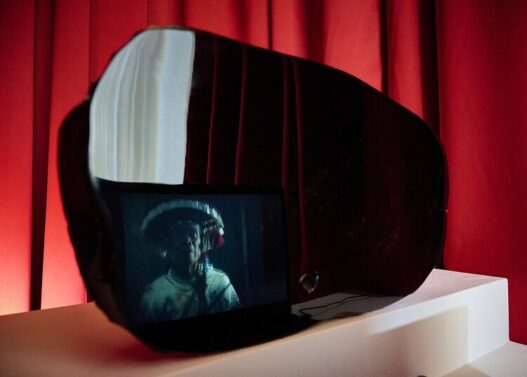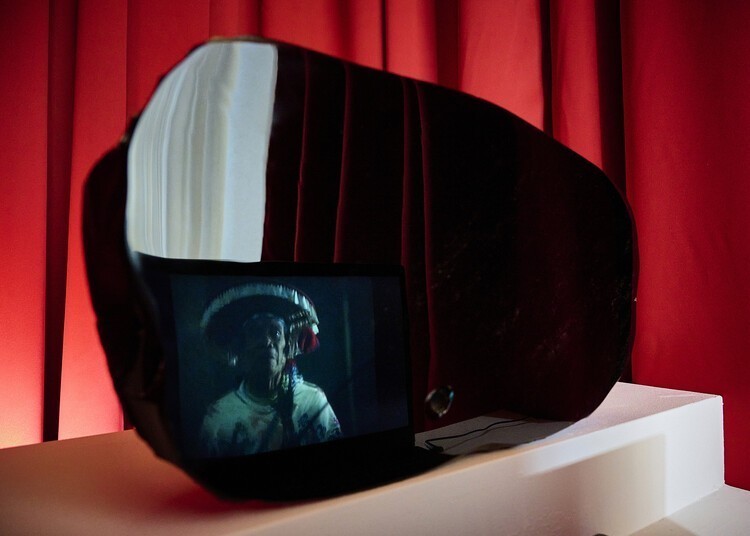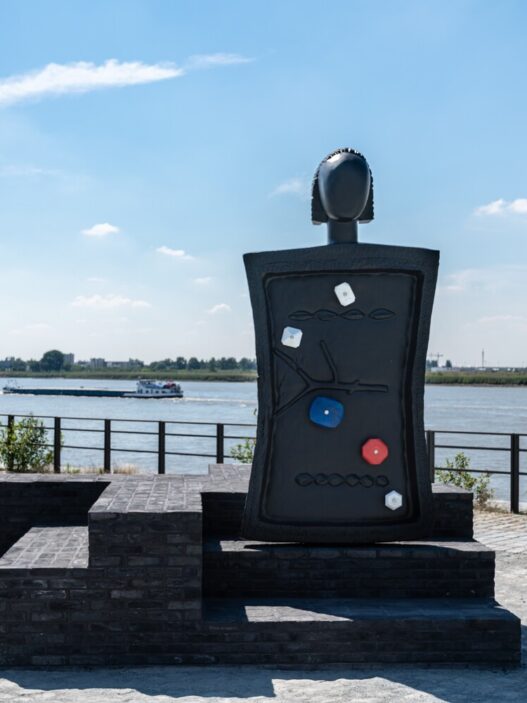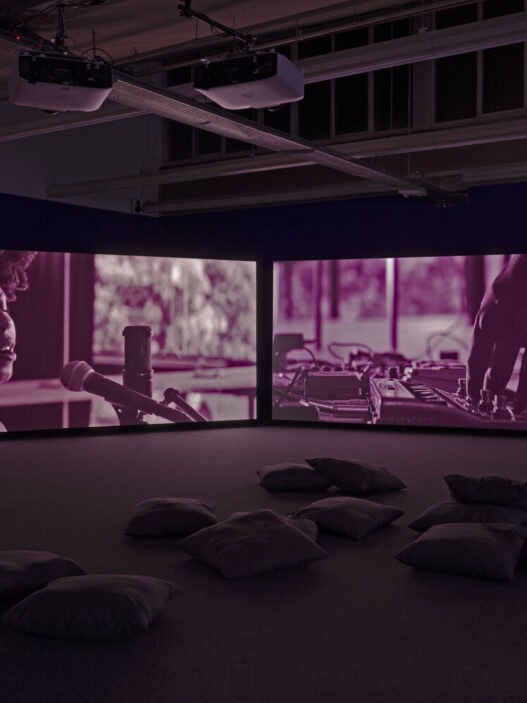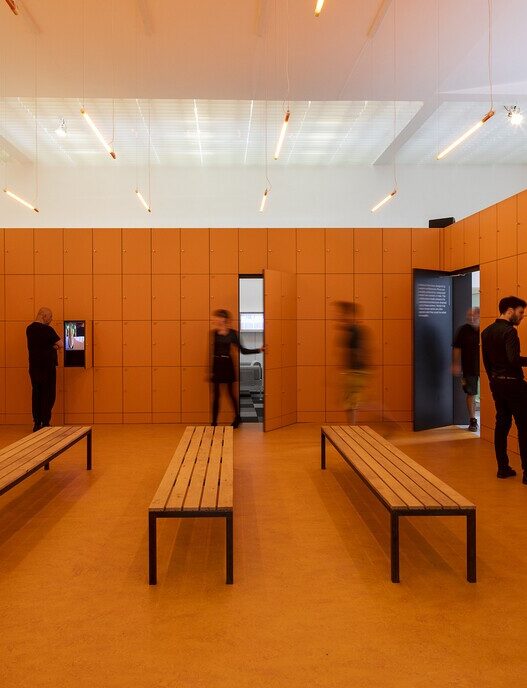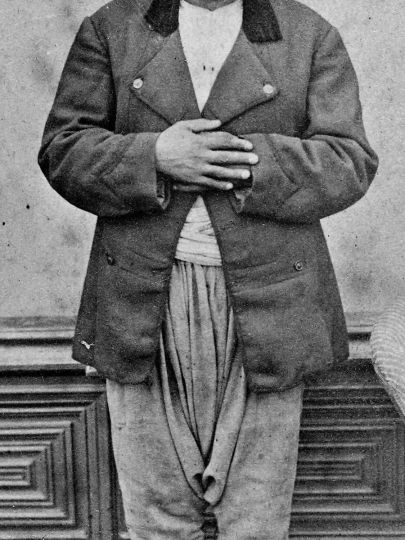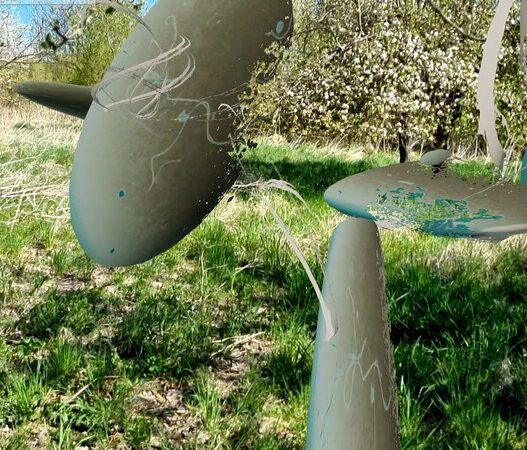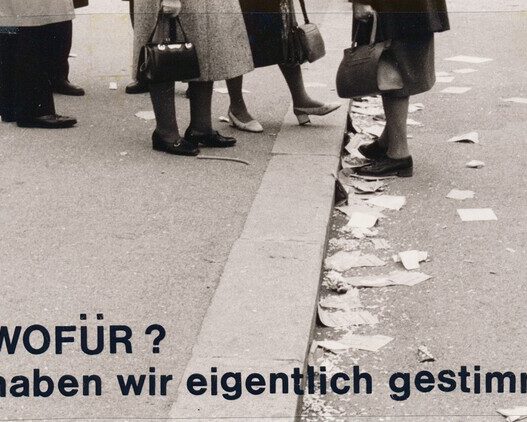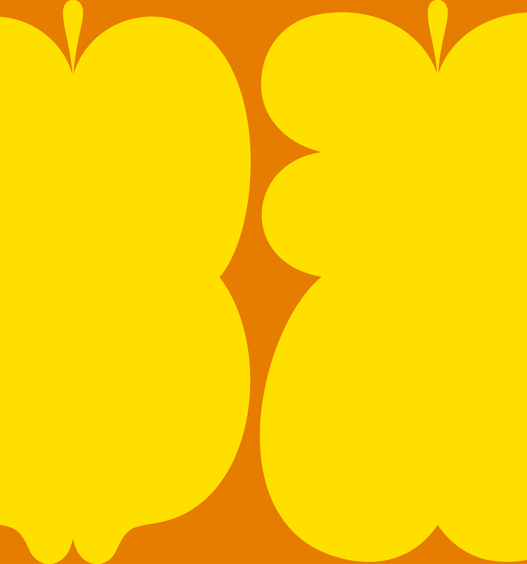June 4–October 3, 2022
On June 4, 2022, the 15th edition of the Fellbach Triennial of Small Sculpture will commence, bringing together around 50 artistic positions. Curator Elke aus dem Moore’s exhibition, The Vibration of Things, poses fundamental concerns about our current situation—questions that are crucial to our coexistence on this planet. Artistic viewpoints are provided that deal with socially extremely topical themes of ownership, interconnection, restitution, and accountability, starting with the vitality of matter and consequently the effective force of objects. These themes are addressed in a narrative parcours in the Alte Kelter, the Triennial’s traditional exhibition venue, as well as in a forest piece and a digital exhibition space.
The Triennial was created in close collaboration with Memory Biwa, Antje Majewski, and Gabriel Rossell Santillán from the start. They developed their own contributions to the Triennial as co-curators and asked artists to participate.
Elisia Nghidishange, Philisa Zibi, Thania Petersen, Vitjitua Ndjiharine, and Stephané Edith Conradie were among the guests invited by Memory Biwa. Biwa’s curatorial project is concerned with the charging and loading of objects that can change and even vanish, particularly in the context of forced movement of objects caused by war, robbery, or other acts of violence. What impact do lost objects have on individuals and entire communities? Is it possible to extinguish an object’s charge, or its energy? Is there any chance of reactivation? Are there parallels across different eras and locations?
Antje Majewski’s project likewise focuses on the heart of the Triennial’s issues and provides a specific, performative answer. She has invited Pawe Althamer, Agnieszka Brzeaska, Alioune Diouf, Cecilia Edefalk, Gregor Prugger, Paulina Kondraskov, and Pawe Freisler to Sculpture Forest Sanctuary. They discuss the question of life ownership as a group. Majewski investigates the concept, or rather impossibility, of owning such a multi-dimensional, multi-faceted multiplicity as a forest and tailoring it to one’s own needs. A legal agreement and a spiritual agreement are linked to the installation of the figures in the forest: the forest may no longer be instrumentalized, used as a resource, or even entered by humans.
The initiative of Gabriel Rossell Santillán resonates through time and civilizations in the Pacific. He transports us to a time when the Pacific was regarded as the Earth’s center. The adventure begins with a tapestry created in northern India at the Fatehpur Sikri region between 1585 and 1590. The numerous varied artistic forms on this carpet are rare, as they refer to various ethnic traditions from all throughout the Pacific region. Aspects of this carpet are lost today. Gabriel Rossell Santillán has dedicated himself to figuring out the missing pieces of the carpet with artists from the Pacific region (Japan, Philippines, Colombia, Peru, Mexico), including Lizza May David, Keiko Kimoto, Karen Michelsen-Castaón, Antonio Paucar, and Luis Ortiz.
Resonances
A full program of events will be held in conjunction with the exhibition. Nikola Hartl created the three-part series Resonances—Listening to Things More Often, which includes film screenings, discussions, and performances that illustrate different viewpoints on the topics. Reparation and restitution will be addressed in #1 Resonances. Resonances #2 In conversations and interventions with Brenna Bhandar, Irene Schöne, Antje Majewski, and others, property and legality are at stake.
Parallel exhibition
The work of the Colombian artist Nijolė Šivickas, born in 1925, who represents an essential artistic position in the Triennial, will be presented parallel to the Triennial in a solo exhibition at the Galerie der Stadt Fellbach from 9 June to 4 September. Born in Lithuania, she studied at the State Academy of Fine Arts in Stuttgart from 1946 to 1950. Šivickas lived in Colombia from the 1950s until her death in 2018.
Collaborations
ifa Gallery Stuttgart will presents the multidisciplinary sound duo Pungwe—Memory Biwa and Robert “Chi” Machiri (September 22–24), titled When gathering ruins through ceremony, objects become songs. Artist Chiara Bugatti invited the choreographer Alessandro Giaquinto for the dance study Rehearsing brutality until it is totally destroyed with dancers from the Stuttgart Ballet on June 22 and September 27 in the Alte Kelter.
Catalogue
The catalogue The Vibration of Things brings together artistic, literary and theoretical texts by Elke aus dem Moore, Memory Biwa, Antje Majewski, Paz Guevara, Jane Bennett, Ailton Krenak, Hervé Yamguen, Robin Wall Kimmerer, Sharon Dodua Otoo, Amogelang Maledu, Laura Ganda, Mara Johanna Kölmel and Marie T. Martin, among others. The catalogue is by Archive Books.
Curator: Elke aus dem Moore in collaboration with Memory Biwa, Antje Majewski and Gabriel Rossell Santillán. Assistance Curator: Jandra Boettger, Nikola Hartl, Sarie Nijboer
Further information
City of Fellbach—Cultural Office, Hintere Straße 16, 70734 Fellbach
T 0711 5851 364 / [email protected]
Press contact
Markus Müller, T +49 30 20188432 / [email protected]
BUREAU MUELLER, Knaackstr. 71, 10435 Berlin
Fellbach Triennial
Alte Kelter Fellbach
Untertürkheimer Strasse 33
70734 Fellbach
Germany
Hours: Tuesday–Friday 2–7pm,
Thursday 2–9pm,
Saturday–Sunday 11am–7pm









